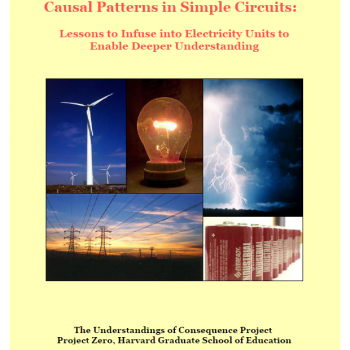
Causal Patterns in Simple Circuits: Lessons to Infuse into Electricity Units...
PUBLISHED:Resource Summary
Causal Patterns in Simple Circuits is a set of lessons that are to be infused into a broader unit on simple electrical circuits. The lessons are designed to address a set of persistent misunderstandings that students have when learning about simple circuits. These misunderstandings stem from how students reason about the nature of causality. Background information is given to help teachers understand typical misunderstandings and how each shows up in students reasoning about simple circuits. The module is designed to move students away from linear and sequential models towards more complex models that better explain the way circuits work. Each lesson includes subject matter goals and more general goals about the nature of cause and effect, as well as a set of steps to help students assess their understanding and to connect the knowledge beyond the original learning context. The curriculum incorporates best practices in science education, such as inquiry-based learning and modeling. It is designed for middle school but can be modified for use with older and younger students. Teaching about static electricity is recommended before teaching about electrical circuits. Understanding electrical charge helps prepare students for understanding electrical circuits. This curriculum module was developed as part of a research project called the Understandings of Consequence Project, which is supported by the National Science Foundation. 2004


-
-
-
-
-
-
Support PZ's Reach